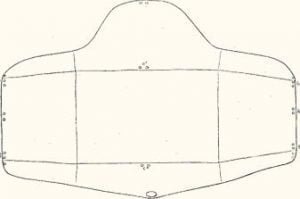Games of the Plains Tribes
Amusements and gambling are represented in collections by many curious devices. Adults rarely played for amusement, leaving such pastime to children; they themselves played for stakes. Most American games are more widely distributed than many other cultural traits; but a few seem almost entirely peculiar to the Plains. A game in which a forked anchor-like stick is thrown at a rolling ring was known to the Dakota, Omaha, and Pawnee. So far, it has not been reported from other tribes. Hoop Game Another game of limited distribution is the large hoop with a double pole, the two players endeavoring to … Read more






